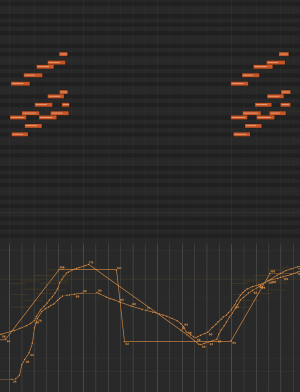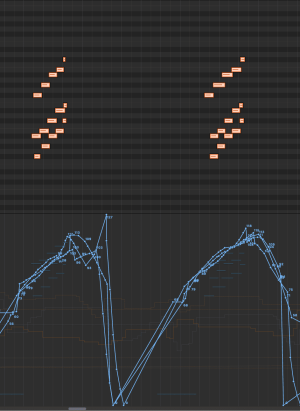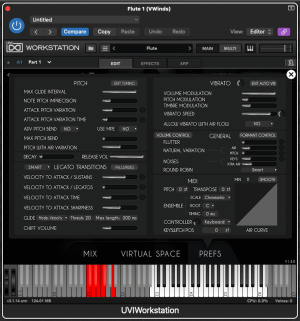The Pitch! Yes that does help a lot.
Excellent. I also detuned any place where strings were playing in octaves (though I could probably detune them even a bit more). That's because of this post on this forum:
And a great tip from @Rctec: "Don't even think about doing the drums until you've written everything else! Fit them around the music. Once you cover everything in drums, there is no more room for inventive writing and your bass end will become problematic... I always put the perc in last, but I...

vi-control.net
If you haven't already read it, that whole thread is fantastic.
One thing that I like is to increase the Decay time in the flute settings a little bit, I have it on 280 on Flute 1 and 2, to me that sounds more convincing for the shorts.
One thing that I had to do was go back and change all my shorts to be
even shorter. I remember reading somewhere that professional musicians will adjust their playing to the acoustics of the room, so if the room has a long tail, they need to make their staccatos even tighter. With shorter tails, more relaxed. I think I changed my reverb tail which caused me to go back and redo them (self-sabotage #115).
I don't want to contribute to more self sabotage, but I noticed you have Berlin Studio as well - it sounds reeeally good with BS..... just saying

I love Berlin Studio! Ironically, that was my first (and default) reverb choice. I agree 100%, it's a wonderful sound. There's no good reason that I'm not using it. More fate than anything. I started with BS, then started to solve the problem of getting that "vintage" sound. BS with modeled instruments just sounded too clean to my ears. I mistakenly attributed that to the reverb, and switched to another which also offered some actual placement of instruments. Though that sounded better (mostly because I hadn't cracked the nut of placing instruments in the stereo field) with a wider stereo field, but still didn't have that vintage sound. So then I changed to MIR 3D. Only then, did I realize the problem was
me. I read through posts in the forum and suddenly understood wby there were so many posts about saturation plugins and "tape sound". When I added some of that, it solved the problem, but by that time, I was not willing to undo all my reverb settings and go back.
But I probably will try it again (once I have re-entered my other life for a bit). Maybe I can use MIR for raw positioning, but then run the sound through BS.
Could you maybe post an audio example of Viola from rehearsal 17 / bar 198 to 238?
It's 3:30 in your version.
I find it hard to decide to go for a more legato or staccatissimo approach here. I think you really nailed the "clarity of each note" vs "sluring fast legato".
You bet. That's my favorite viola part in the whole piece! Like a little bee buzzing around everthing else and it only happens once.
Here's what I have:
View attachment Sorcerer's Apprentice Mockup (mbishop) - Viola RH 17-20.mp4
I wanted the viola to make an entrance there, but then fade away like it's going to leave you alone, except that bee comes back, buzzing around!
You didn't ask about this specifically, but you might notice that the expression lane has a little bumps over the barlines, regardless of crescendo or decrescendo. That turned out to be essential to make the piece skip along. Every instrument in the mockup is (almost) always bouncing over those barlines. I think it was my high school jazz band teacher who told me that even if I was the only instrument playing, the audience should know where the beat is.
Here's the dry version of that same line so you can get a feel for the staccato and release times without the reverb interfering.
View attachment Sorcerer's Apprentice Mockup - Viola (Dry) RH 17-20.mp3
Edit: Replaced the dry recording since there was still a little reverb from the MIRacle insert.













